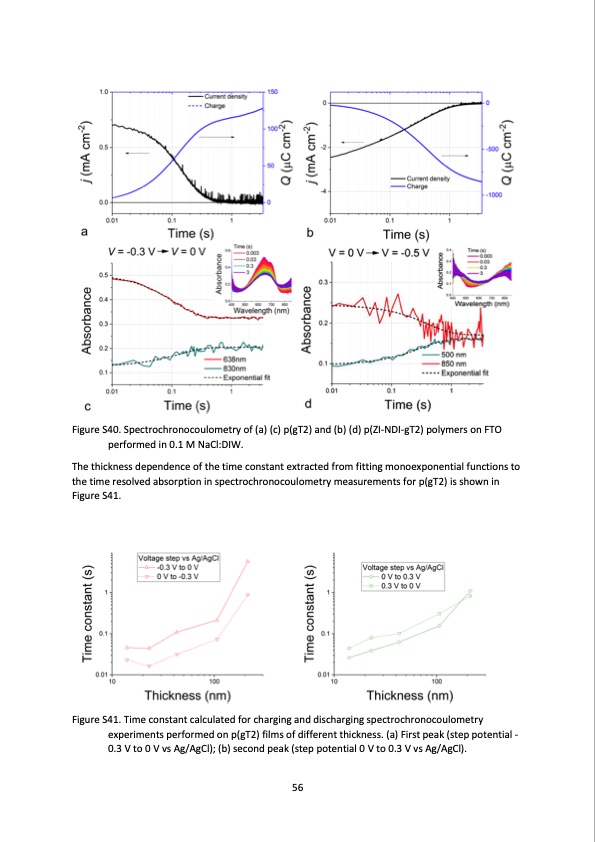
PDF Publication Title:
Text from PDF Page: 056
Figure S40. Spectrochronocoulometry of (a) (c) p(gT2) and (b) (d) p(ZI-NDI-gT2) polymers on FTO performed in 0.1 M NaCl:DIW. The thickness dependence of the time constant extracted from fitting monoexponential functions to the time resolved absorption in spectrochronocoulometry measurements for p(gT2) is shown in Figure S41. Figure S41. Time constant calculated for charging and discharging spectrochronocoulometry experiments performed on p(gT2) films of different thickness. (a) First peak (step potential - 0.3 V to 0 V vs Ag/AgCl); (b) second peak (step potential 0 V to 0.3 V vs Ag/AgCl). 56PDF Image | salt water battery with high stability

PDF Search Title:
salt water battery with high stabilityOriginal File Name Searched:
salt-water-battery.pdfDIY PDF Search: Google It | Yahoo | Bing
Product and Development Focus for Salgenx
Redox Flow Battery Technology: With the advent of the new USA tax credits for producing and selling batteries ($35/kW) we are focussing on a simple flow battery using shipping containers as the modular electrolyte storage units with tax credits up to $140,000 per system. Our main focus is on the salt battery. This battery can be used for both thermal and electrical storage applications. We call it the Cogeneration Battery or Cogen Battery. One project is converting salt (brine) based water conditioners to simultaneously produce power. In addition, there are many opportunities to extract Lithium from brine (salt lakes, groundwater, and producer water).Salt water or brine are huge sources for lithium. Most of the worlds lithium is acquired from a brine source. It's even in seawater in a low concentration. Brine is also a byproduct of huge powerplants, which can now use that as an electrolyte and a huge flow battery (which allows storage at the source).We welcome any business and equipment inquiries, as well as licensing our flow battery manufacturing.| CONTACT TEL: 608-238-6001 Email: greg@salgenx.com | RSS | AMP |